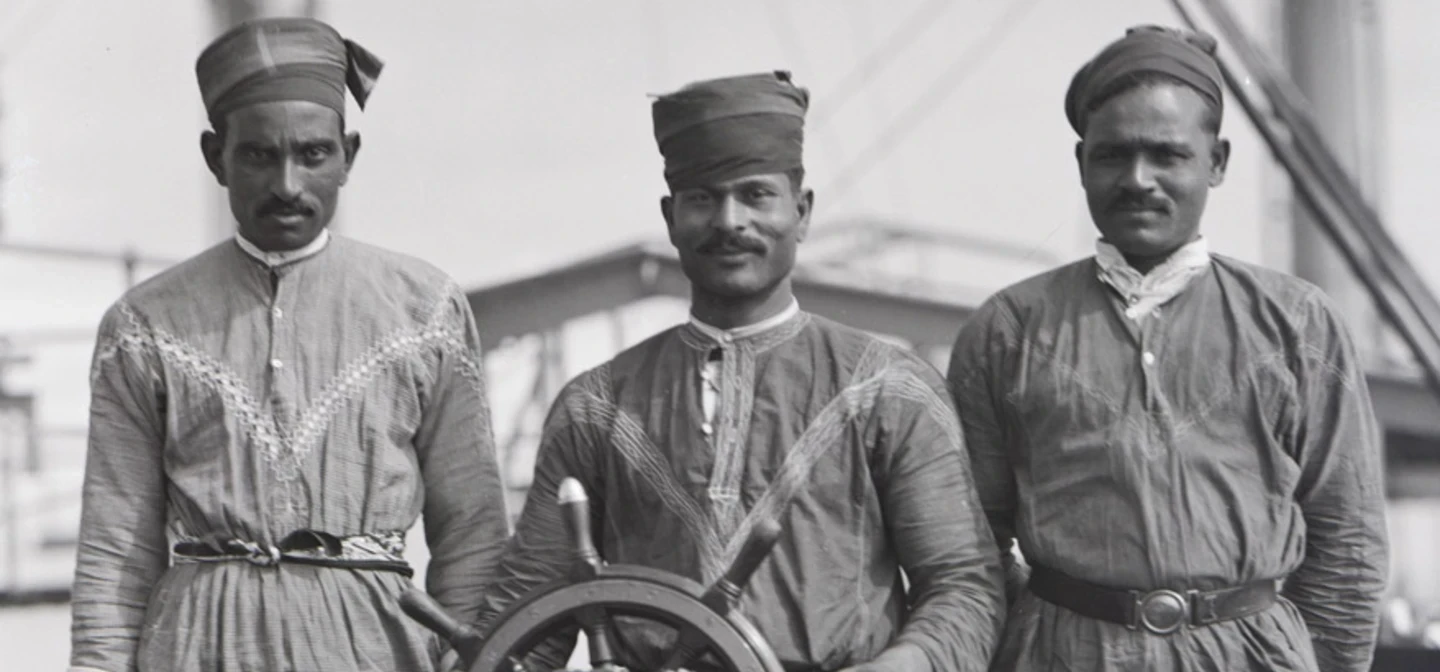
Lascars in Greenwich Park
Lascar sailors at Greenwich
From the 1700s until the mid-1900s, when London was one of the busiest ports in the world, areas around the docks such as Deptford and Greenwich hosted sailors from across the globe. These men could sometimes be found enjoying the beauty of Greenwich Park.
In 1836, a group of what were known as ‘lascars’ – sailors from countries in and around the Indian Ocean, many from South Asia – found themselves stuck at Deptford dockyard for a few months.
The group had first arrived at Portsmouth in early March, aboard the Liverpool. This was a warship with 74 guns and a crew of 6 officers, 35 European seamen, and 180 lascars.
The Liverpool was a gift to HM King William IV (1765-1837) from the Imaum of Muscat, an ally of Britain, who controlled an empire around the Persian Gulf. The ship was soon renamed HMS Imaum in recognition of this gift, which also included horses, cows, buffaloes and oxen.
While the ship’s lascars waited for a return voyage, they were housed in the Old Custom House in Portsmouth and supplied with warm clothes, blankets, food and cooking facilities.
In April, the papers reported that the King intended to present the Imaum with a gift in return. This was the yacht Prince Regent, at the time in dock at Deptford. On 14 May, about 100 of the lascars arrived in Deptford, ready to sail the Prince Regent back to Muscat.
It took around four months for the Prince Regent to be repaired and refitted before it was finally ready to leave Deptford, giving the lascars many days to fill.
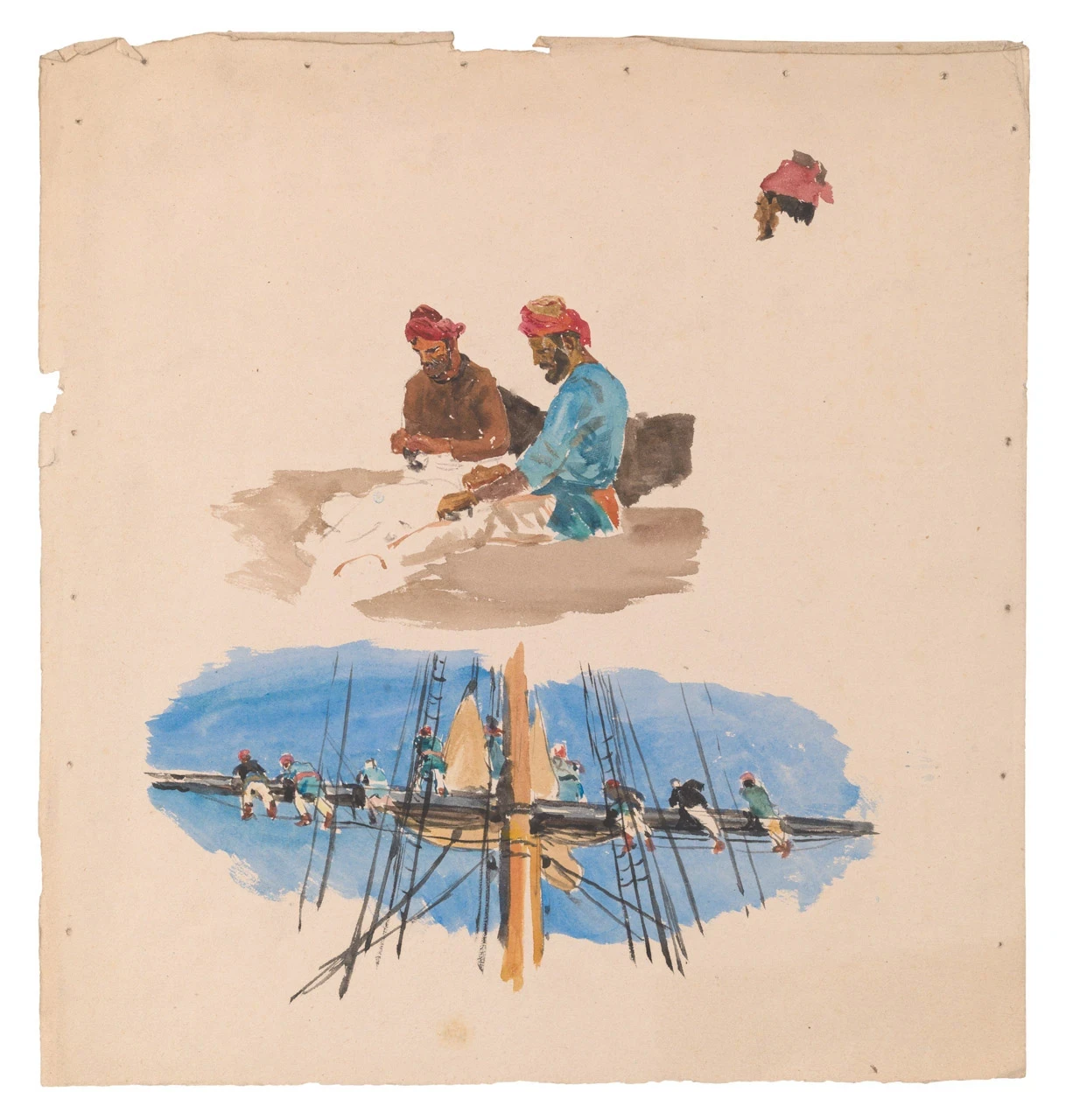
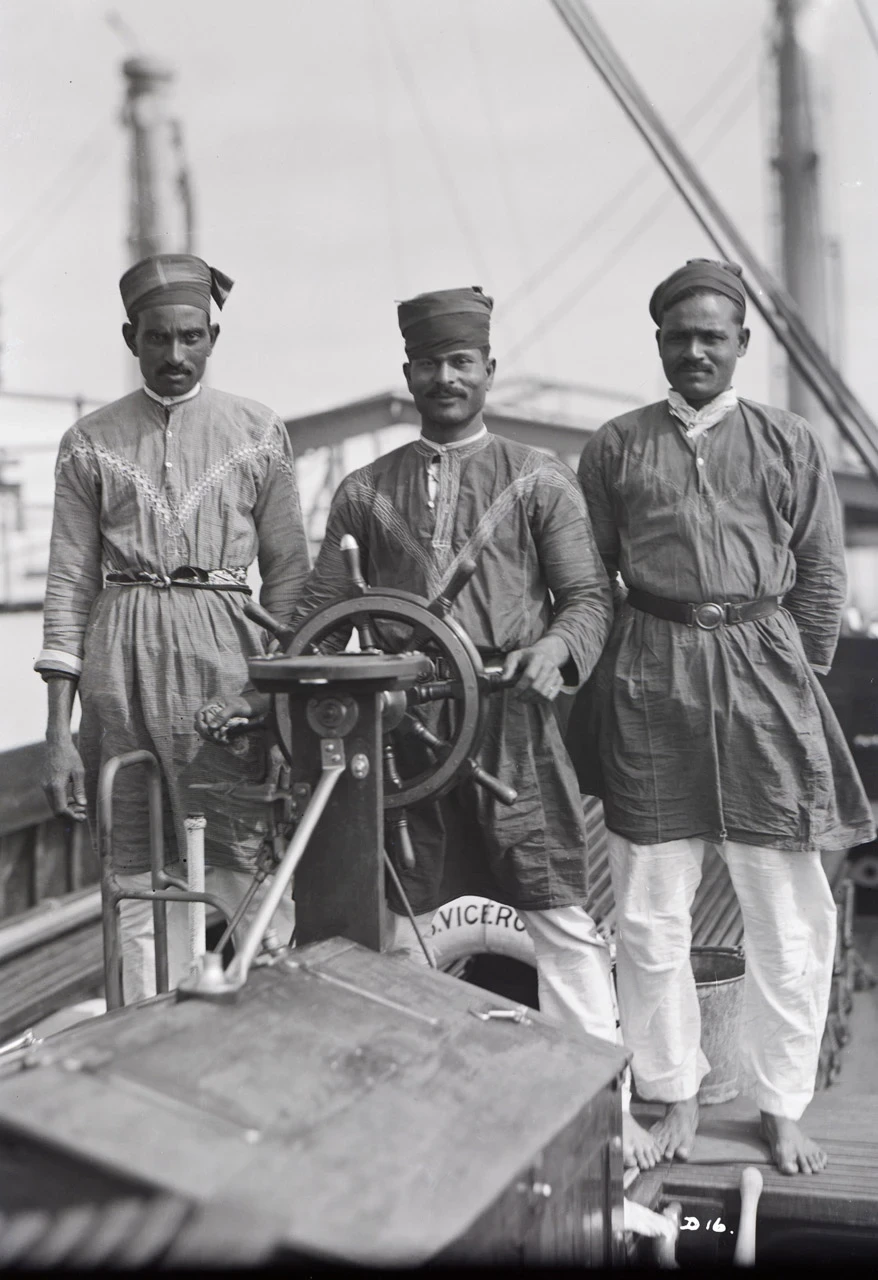
It’s no surprise that the lascars soon found their way to Greenwich Park. Its open spaces would have been an attractive destination in the summer – especially as it was free for them to enter.
In July, the lascars’ presence in the park was noted in the local paper, the West Kent Guardian. A contributor calling themselves ‘Q’ wrote a letter to the editor, explaining that the sailors were ‘in the habit of meeting in the evening in Greenwich Park and there playing some of their national games, to the great amusement of the inhabitants of the town.’
Q went on to describe the sailors ‘sitting in groups of six or eight on a lawn’, preparing to demonstrate some of their traditional music to the local people. They were determined, Q said, ‘to show the English what they could do.’ Around 200 people had gathered to watch, and at about 7.45pm the sound of the lascar band started to echo around the park.
However, the fun was soon stopped. The Park Keeper interrupted the enthusiastic musicians and ordered the lascars out of the park saying they were giving an unauthorised performance.
Our correspondent, Q, was outraged by the Park Keeper’s actions. They questioned his authority and thought that the Park Ranger – HRH Princess Sophia Matilda (1773-1844), niece of King George III and cousin of William IV – would not have supported the Park Keeper’s action. ‘I think it is giving those men’, he said, ‘a very bad opinion of our politeness, more especially considering the friendly errand they came on.’
The Editor of the West Kent Guardian agreed – in somewhat overwrought language. In an editorial, he called the Park Keeper a ‘shrivelled-skinned, dried-up piece of human wicker-work’ who had the power ‘to create in these sons of the east a belief that people in England are driven from public parks like so many dogs’.
The Editor concluded with a wish that the lascars would be offered use of the park as a space of recreation for as long as they were in London.
While it is unknown whether these friendly lascars returned to Greenwich Park, this story shows that the park has long been a place of refuge to people from all around the world.
This blog post was researched and written by the Greenwich Park History Group. For more information on the history of the park, visit their website.
Our thanks to Dr Aaron Jaffer, Curator of World History and Cultures at Royal Museums Greenwich, for his input on this story.
Related Articles
-
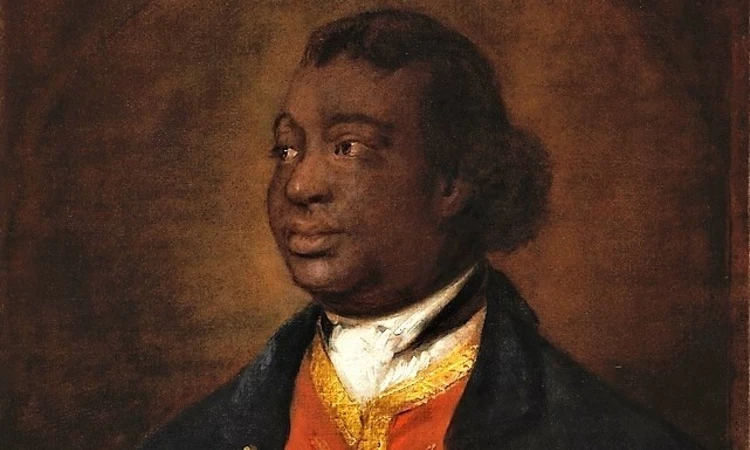 Read
ReadRemembering Ignatius Sancho
Ignatius Sancho was a writer, composer and abolitionist who lived on the edge of Greenwich Park, and became the first black person to vote in Britain.
-
 Read
ReadGreenwich Park Magnetic Observatory
Did you know that Greenwich Park was once home to a second observatory? Discover why it was built and how recent archaeological digs unearthed its secrets.
-
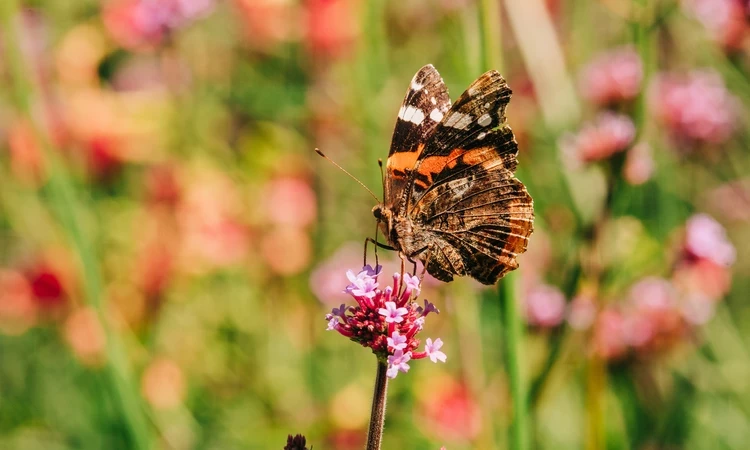 Read
ReadGreenwich Park’s Flourishing Grassland Habitats
Regular visitors to Greenwich Park may have noticed changes to the landscape, finding themselves strolling through longer grasses in new areas.